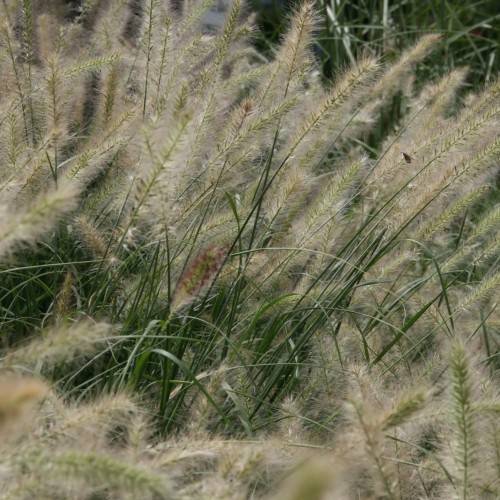
fountain grass
Pennisetum alopecuroides 'Piglet'
Cycle:
Perennial
Watering:
Frequent
Hardiness Zone:
6 - 9
Flowers:
Flowers In Summer
Sun:
Full sun, Part sun/part shade
Soil:
Acidic, Well-drained
Fruits:
Fruits In Autumn Ready In
Leaf:
Yes
Growth Rate:
High
Maintenance:
Low
Drought Tolerant:
Yes
Salt Tolerant:
Yes
Care Level:
Moderate
watering
Fountain grass should be watered deeply and often, usually once every 7-10 days. Make sure to saturate the soil for the best results. During periods of extreme heat, the plant may require additional water to ensure it does not dry out. Make sure to check the soil often to determine when it is time to water the fountain grass again, as the frequency may vary depending on the season and weather.
sunlight
Fountain grass (Pennisetum alopecuroides 'Piglet') grows best in areas with full sun, which means 6-8 hours of direct sunlight per day. The brightest hours of sunlight for this plant species range from around 10am until 4pm. However, morning and late afternoon sun are also beneficial. If planted in a partially shaded area, the fountain grass may grow spindly and thin.
pruning
Fountain grass should be pruned twice a year. The first pruning should occur in late winter to early spring, before new shoots appear. During this pruning, any dead or damaged foliage should be cut away and the plant should be thinned out to encourage more compact, denser growth. The second pruning should occur in early to mid-summer, about 6 weeks after the first. During this pruning, the tallest shoots should be trimmed back to encourage fuller growth and to help control the plant’s size. It is also important to trim away any wilted or dead foliage. Fountain grass should be pruned lightly each time, with only 1-3 inches of the stems cut away. Pruning any more than that can cause damage to the plant. Frequent, light pruning is better for the plant’s health and encourages fuller, more lush growth.
